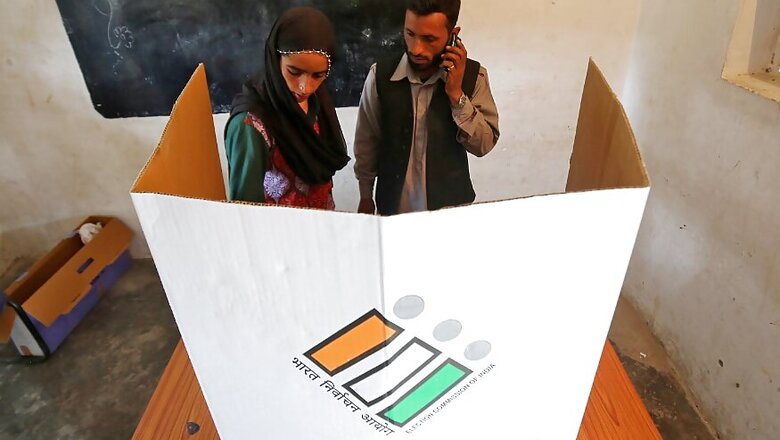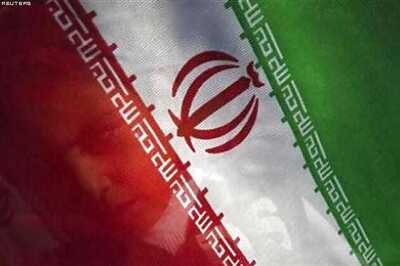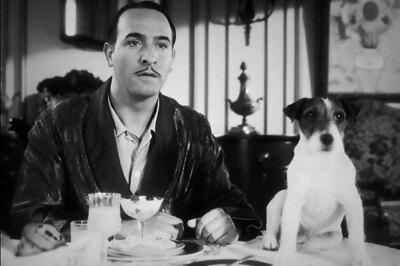
views
The politicians are put there to give you the idea you have freedom of choice. You don't. You have no choice. You have owners. They own you. They own everything. They own all the important land, they own and control the corporations that've long since bought and paid for, the senate, the congress, the state houses… they got the judges in their back pocket, and they own all the big media companies so they control just about all of the news and the information you get to hear. ..They want more for themselves and less for everybody else. But I'll tell you what they don't want. They don't want a population of citizens capable of critical thinking. They don't want well informed, well educated people capable of critical thinking. They're not interested in that. That doesn't help them.”
- George Carlin, Stand-up Comedian.
Readers may find it a strange irony that the words of an American social critic and a stand-up comedian are being used to analyse Indian elections. However, black humor like music has no boundaries and surely democracies turn out similar atrocities. The bounce across geographies must not make us lose focus on the message. As young citizens of a democracy, critical free-thinking must be our only response.
Factors in Indian Elections
Apart from the much analysed caste factor, the Indian voter may consider ideology, policies and corruption as the issues that decide where the vote goes. Applying free and critical thinking to all these factors is an interesting experiment in politics. Corruption became a big issue in Indian politics with the advent of India Against Corruption movement in 2011. Within a year, with amazing speed, it turned into a political party.
Within another year the Aam Admi Party was in power. Corruption as an electoral plank has the power to sway electoral verdicts. One of the strongest moves against corruption was the Right to Information Act passed under the leadership of the Congress in 2005. Ironically, it regularly faced charges of corruption thereafter and was voted out of Delhi in 2014, primarily on charges of corruption.
There are no statistics available on the decrease in corruption in Delhi after 2014. However, there are statistics available on the number of citizens who have lost their lives or have been attacked due to their usage of the RTI Act since 2005. The number is large. So is corruption a factor in Indian politics? It definitely is a useful device for political parties to bring down their opponents.
In collusion with the media, it is a useful device for propaganda. Ultimately, corruption is widely accepted by the Indian electorate as an inevitable phenomenon. All voters know it is beneficial, and indulge in it freely. Like the proverbial railway coach, till you are outside the system, you cry for a fair chance at getting in, once inside you are a part of the system. Not being corrupt, like social justice is a moral that is always ideal for others to follow.
All this while eradication of corruption really needs strong, individual commitment and is not a political issue. Human minds are amazingly deft at rationalizing their own corrupt practices within institutions, as students and teachers, administrators and as citizens at large. After all once they came to power one of the first steps that the Aam Aadmi took in December 2015 was to pass a bill seeking 400 per cent hike in the basic salary of MLAs and ministers besides hefty increase in perks and allowances… all for fighting corruption.
Ideology as an Election Issue
After 2014, ideology seems to be the other factor driving elections in India. Overall the two major political parties have drawn lines along nationalism, freedom of expression and fascism. The voter has to choose between the two major political parties and various smaller ones marketing these ideologies. So the citizens have to choose between the Right and the Left with the Liberals going whichever way that seems profitable at the moment.
Looking at the classic division between the Right and the Left in Indian politics critically is revealing. Looking at it through critical devices like the Horseshoe theory is devastating. Are the Right and the Left in Indian Politics, and elsewhere really that different? Philosopher Jean-Pierre Faye looked at infamous Molotov-Ribbentrop Pact of 1939 and other instances of right/left coordination, and decided that they were not very different.
Instead, he believed the confluence could be explained by what he called Horseshoe Theory which says that the right and left are not on opposite ends of a linear political continuum. Instead, the political spectrum is bent, like a horseshoe, with the far right and far left at the ends bending around so they almost touch each other. Empirical evidences to support this theory are numerous. But then the most compelling evidence is when citizens choose to critically study the rise of Fascism which is a complex of both ideologies.
Benito Mussolini, the founder of the Fascist party in Italy, was a trained Communist with a thorough understanding of the techniques of mass organization, propaganda and mobilization. He used this training to maximum advantage in creating the structures of Partito Nazionale Fascista (PNF) in Italy. These are historical facts that freethinkers have to access and analyze on their own. These will never be taught in University classrooms anywhere.
This analysis will settle the dust over most claims like freedom of expression, nationalism, secularism and mob lynching, which are emerging from the Indian political spectrum at the moment. While these political trends have been around for long, the game-changer has been the advent of information technology. The internet has rendered obsolete, most traditional forms of ‘knowledge-creation’ and transfer. Critical thinking is possible by clicking a button. All grand theories have been buried by the little machine that allows every citizen to access information and be well informed and capable of thinking for themselves.
Policies as a Factor?
Policies have never been a factor driving Indian elections. Ideally they should be the core factor in any democratic process. In an elite driven policy regime why have voters never asked critical questions? Why is it that the first Education Commission in independent India was the University Education Commission of 1949? In a country that severely needed policies for Universalisation of Primary Education this was a distortion that has never been questioned. Every government that has been voted to power in independent India has ultimately retained a policy regime that is geared to benefitting elites.
Freedom ultimately lies in understanding that politics is an activity rooted in self- interest. And it is in the interest of voters to juxtapose their -interest into the self-centered agendas of politicians and political parties. It is important to understand the motivation behind issues that are thrown at voters by political parties. Is employment generation a more important issue than access of women to Sabrimala? Where did the petition for Sabrimala originate anyways? When and how will ‘Garibi Hatao’ become a reality in India? Why is it not ‘hataoed’ till now? Why have policies for the past 70 and more years in India been elite driven? Why did the Universal Basic Income Scheme come as an election promise in 2019, and not before?
In this new and changed political spectrum where the voter is not restricted by the lack of information, propaganda has both intensified and can be made to lose its power by voters who think critically. Freedom is ultimately what critical citizens will claim for themselves while being surrounded by rhetoric and a culture of silence in institutions.
(The author is Assistant Professor of Political Science, Miranda House, University of Delhi. Views expressed are personal.)















Comments
0 comment